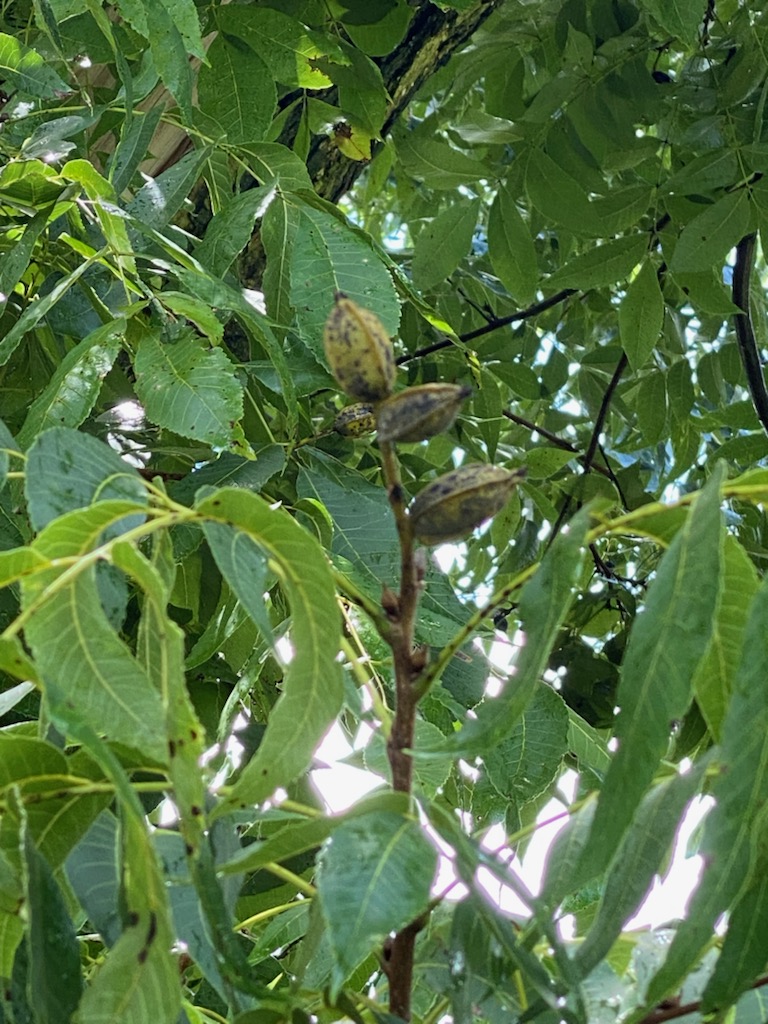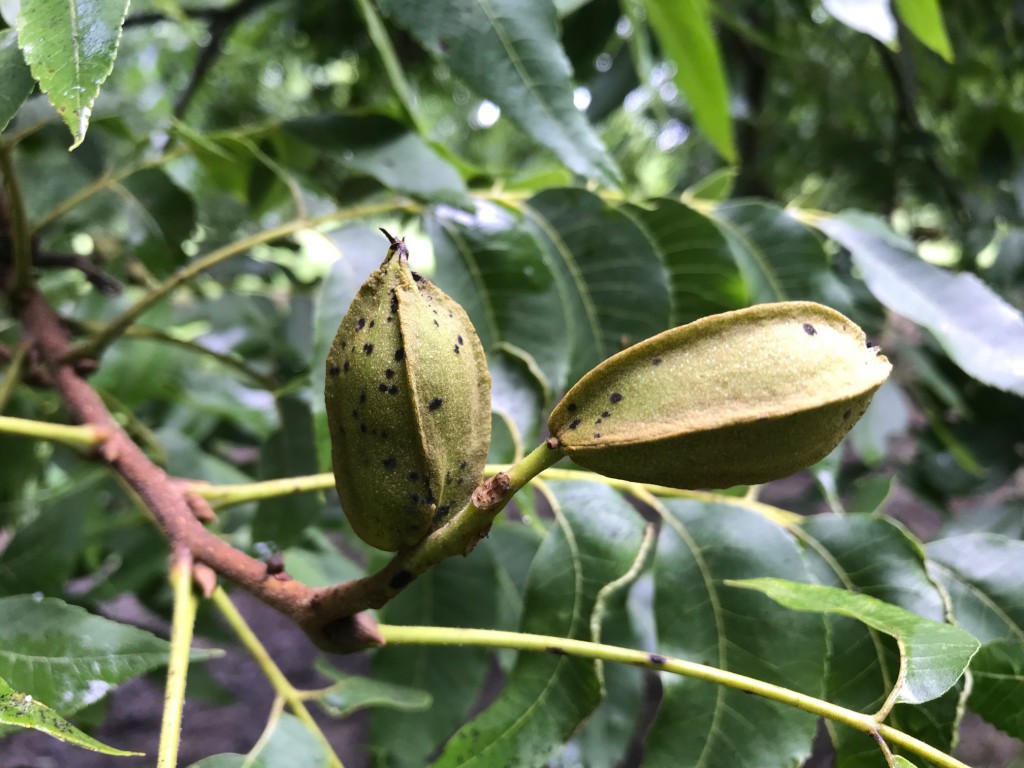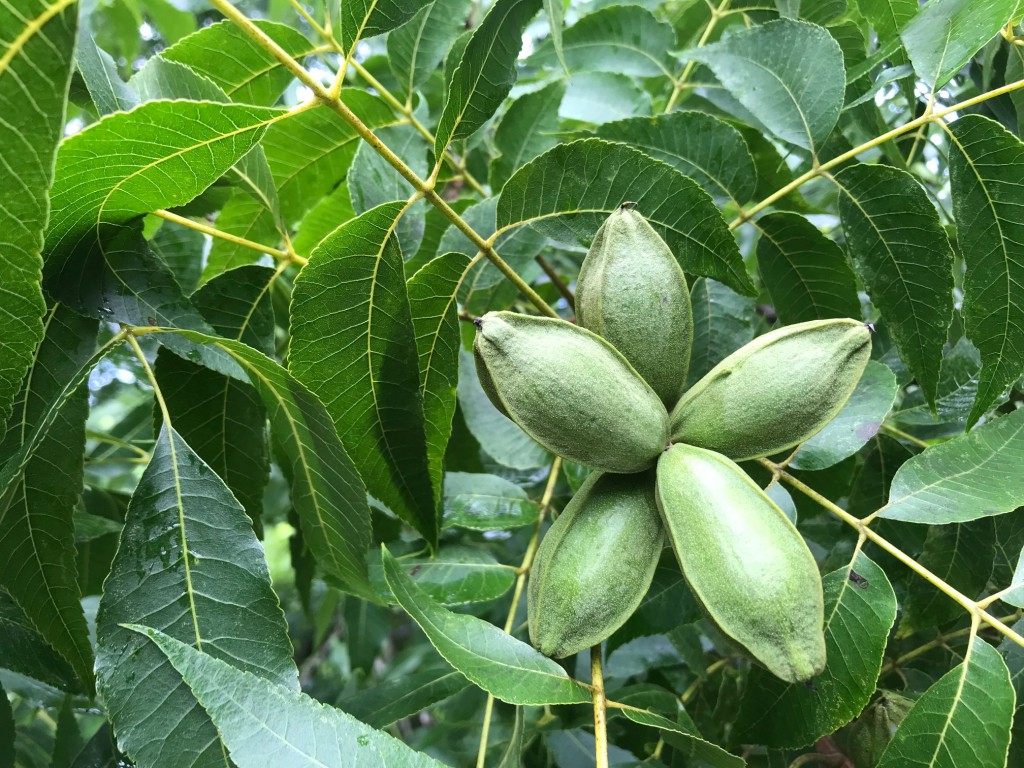I just returned from the Texas Pecan Growers Conference. The pecan estimate from the meeting is found below:
Alabama : 2 million
Arizona: 38 million
Arkansas: 3 million
California: 5 million
Florida: 2 million
Georgia: 82 million
Kansas: 2 million
Louisiana: 8 million
Miss: 1 million
Missouri: 1 million
New Mex: 96 million
Oklahoma: 13 million
S. Carolina: 2 million
Texas: 41 million
TOTAL US CROP: 297 million lbs
Bear in mind that this is an estimate 1/2 way through the season and it could very well be lower than this. At the moment, I don’t think it is impossible for Georgia to have the 82 million lb crop load predicted at the Texas meeting but I don’t think we’ll end up making that. From what I see in Georgia, young trees (30 yrs and under) have a good crop load while most old mature trees are very light. We have a lot of old trees out there. We will see this year just how much the young trees contribute to the crop because that is where the largest portion of the volume will come from. In addition scab is wreaking havoc in Georgia at the moment on susceptible varieties (more on this later). We will almost certainly see a sizeable reduction in the crop as a result of scab losses. Another question mark is, can the West produce as large a crop as is predicted for them with the water issues they currently face? No matter where pecans are grown this year, 2021 has been a challenging year.
So, now for some rare good news for pecan growers:
It appears that the large carryover of nuts from the 2020 crop is diminishing rapidly. I was told shellers are shelling nuts and moving them out just as quickly as they can get them in. This is occurring at such a pace that there is concern shellers may run out of nuts before we get to harvest. With the low volume currently out there in the face of the large carryover of nuts we had in storage, the 2021 shipment of pecans and consumption of those nuts strongly indicate a sharp increase in demand for pecans. See the American Pecan Council website for the latest (May 31) official numbers on shipments and cold storage here
Additionally, reports are that the South African crop was lighter this year and the Mexican crop is lighter. The Mexican state of Chihuahua, a large pecan producing state, is also said to be dealing with water availability issues over about 1/3 of the production area in that state.
There is no guarantee but all of these factors point to the possibility of growers seeing much better prices for pecans this year than we saw in 2020.
Scab
As you all know, this has been an almost apocalyptic year for scab. Most areas in the state have seen almost daily rainfall for the last month or more. This comes at the worst possible time for pecan scab—the nut sizing period. The worst problems I have seen have been on Desirable and other susceptible varieties when growers did not tighten up spray intervals from 14 days to 10 days (or less) soon enough. In some cases, even if growers did tighten up, the rains have been so frequent that they washed off the fungicide before it had time to dry or be absorbed by the tree.
To give you an indication of how bad it is in some areas, the following photo (its a bit blurry but you can make out the scab) was sent to me by a grower who had 7 sprays on these Desirable by July 21. With this much scab on these pecans it is not likely they can be saved at this point

I went out this morning to check on the condition of the varieties in our low-input trial at the Ponder Farm Research Orchard near TIfton. Over the last 30 days we’ve had 12 days with at least 1/10″ of rain and only 10 days with no rain at all. Often it has rained in successive days. Below are photos of Desirable with 7 sprays and Lakota with 0 sprays at the Research Orchard:


These images demonstrate the importance of scab-resistant varieties in the battle against the disease. The battle is far from over this year on susceptible varieties.
Continue rotation of Miravis Top and Elast/Tin through shell-hardening. For those orchards with some scab (but not so much that the crop is nearly lost) use a full rate of Elast when Elast/Tin comes up in the rotation. You should only need one more spray after this week to get Pawnee to shell-hardening. The crop still seems to be running a little late this year so I do not expect to see Pawnee shell-hardening until maybe the first or second week of August. With this in mind, that last spray would be a good time to make a final shuckworm spray on Pawnee as well. For varieties normally with mid-October harvest date, you may not see shell-hardening until the end of August, which would mean you need to continue fungicide sprays until that time.
